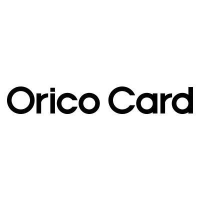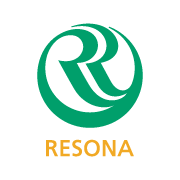Company Analysis Orient Corporation
1. Summary
Advantages
- Dividends (4.94%) are higher than the sector average (2.61%).
- The stock's return over the last year (22.6%) is higher than the sector average (-20.63%).
Disadvantages
- Price (1036 ¥) is higher than fair price (897.49 ¥)
- Current debt level 74.01% has increased over 5 years from 25.38%.
- The company's current efficiency (ROE=5.83%) is lower than the sector average (ROE=7.84%)
Similar companies
2. Share price and performance
2.1. Share price
2.3. Market efficiency
| Orient Corporation | Index | ||
|---|---|---|---|
| 7 days | -1.2% | 0% | 2.1% |
| 90 days | 1.7% | 0.6% | 17.7% |
| 1 year | 22.6% | -20.6% | 21.9% |
8585 vs Sector: Orient Corporation has outperformed the "" sector by 43.23% over the past year.
8585 vs Market: Orient Corporation has outperformed the market by 0.6737% over the past year.
Stable price: 8585 is not significantly more volatile than the rest of the market on "Tokyo Stock Exchange" over the last 3 months, with typical variations of +/- 5% per week.
Long period: 8585 with weekly volatility of 0.4347% over the past year.
3. Summary of the report
4. Fundamental Analysis
4.1. Stock price and price forecast
Above fair price: The current price (1036 ¥) is higher than the fair price (897.49 ¥).
Price is higher than fair: The current price (1036 ¥) is 13.4% higher than the fair price.
4.2. P/E
P/E vs Sector: The company's P/E (12.72) is lower than that of the sector as a whole (104.34).
P/E vs Market: The company's P/E (12.72) is lower than that of the market as a whole (143.8).
4.2.1 P/E Similar companies
4.3. P/BV
P/BV vs Sector: The company's P/BV (0.7411) is lower than that of the sector as a whole (96.38).
P/BV vs Market: The company's P/BV (0.7411) is lower than that of the market as a whole (127.23).
4.3.1 P/BV Similar companies
4.4. P/S
P/S vs Sector: The company's P/S indicator (0.7183) is lower than that of the sector as a whole (95.72).
P/S vs Market: The company's P/S indicator (0.7183) is lower than that of the market as a whole (125.37).
4.4.1 P/S Similar companies
4.5. EV/Ebitda
EV/Ebitda vs Sector: The company's EV/Ebitda (37.95) is lower than that of the sector as a whole (130.39).
EV/Ebitda vs Market: The company's EV/Ebitda (37.95) is lower than that of the market as a whole (154.8).
5. Profitability
5.1. Profitability and revenue
5.2. Earnings per share - EPS
5.3. Past profitability Net Income
Yield Trend: Negative and has fallen by -6.5% over the last 5 years.
Accelerating profitability: The return for the last year (10.91%) exceeds the average return for 5 years (-6.5%).
Profitability vs Sector: The return for the last year (10.91%) is lower than the return for the sector (14.18%).
5.4. ROE
ROE vs Sector: The company's ROE (5.83%) is lower than that of the sector as a whole (7.84%).
ROE vs Market: The company's ROE (5.83%) is lower than that of the market as a whole (7.97%).
5.5. ROA
ROA vs Sector: The company's ROA (0.4838%) is lower than that of the sector as a whole (4.03%).
ROA vs Market: The company's ROA (0.4838%) is lower than that of the market as a whole (4.65%).
5.6. ROIC
ROIC vs Sector: The company's ROIC (0.5887%) is lower than that of the sector as a whole (7.17%).
ROIC vs Market: The company's ROIC (0.5887%) is lower than that of the market as a whole (8.88%).
7. Dividends
7.1. Dividend yield vs Market
High yield: The dividend yield of the company 4.94% is higher than the average for the sector '2.61%.
7.2. Stability and increase in payments
Dividend stability: The company's dividend yield 4.94% has been steadily paid over the past 7 years, DSI=1.
Weak dividend growth: The company's dividend yield 4.94% has been growing weakly or stagnant over the past 5 years. Growth over only 0 years.
7.3. Payout percentage
Dividend Coverage: Current payments from income (49.37%) are at a comfortable level.
Pay for your subscription
More functionality and data for company and portfolio analysis is available by subscription
 MAX Chat
MAX Chat



